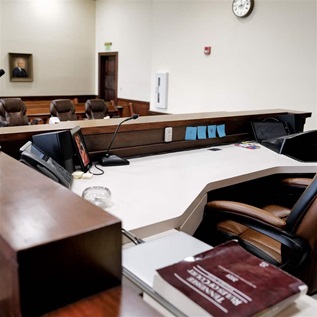Ground Is Broken For New Museum and Visitor Center At Gettysburg National Military Park
A new Museum and Visitor Center for Gettysburg National Military Park took a major step forward today, as ground was broken for the state-of-the-art facility adjacent to the battlefield.
"The groundbreaking ritual marks the end of one phase of the project and the beginning of another," said Robert A. Kinsley, chairman of the board of directors of the Gettysburg National Battlefield Museum Foundation, which is funding and building the facilities, and will operate them for 20 years. "We will see you back on this site for the opening of the museum in 2007."
The 139,000 square foot, $68.3 million facility has been designed to blend into the rural Pennsylvania countryside. It is sited at a low point in the terrain so it will not be visible from major interpretive points on the battlefield. Cooper Robertson & Partners of New York City is the design architect; LSC Design of York, Pa., is the architect of record.
"Today we celebrate a partnership that will help ensure that the treasures of Gettysburg National Military Park are forever preserved," said Fran P. Mainella, director of the National Park Service, which is working in partnership with the Gettysburg Museum Foundation to preserve the resources of the park, to tell the story of the Gettysburg Campaign, and to give visitors a deeper, more lasting appreciation for what happened here.
Ground was broken at what will be the front door of the new facility when it opens in late 2007. Members of Pennsylvania's Congressional delegation, along with representatives from National Park Service Headquarters, the Commonwealth of Pennsylvania, the Borough of Gettysburg, Cumberland Township and Adams County joined representatives from the Foundation and Gettysburg National Military Park for the formal groundbreaking ceremonies. Many of the more than 250 private foundations, corporations and individuals that have made donations to the project also participated.
"Gettysburg has long deserved a museum and visitor center that properly honors the sacrifices of the men who fought here, that preserves the artifacts and archives from that era in our nation's history, that excites and inspires new generations of visitors about what happened here, and that helps visitors understand how the events of that era connect to what is going on in our world today, " said Gettysburg Foundation President Robert C. Wilburn.
The new Museum and Visitor Center at Gettysburg National Military Park represents the heart of the Foundation's Campaign to Preserve Gettysburg, which will help protect the resources of the park and help visitors better understand the sacred ground of Gettysburg, America's most revered Civil War battlefield.
"We want to create a sense of place that evokes the emotions of 1863, while also meeting visitors' expectations of a 21st-century museum experience," Wilburn said. "The building will showcase the battlefield and encourage visitors to go outside and explore the historic landscape." Exhibits will immerse visitors in the stories of the battle and the Civil War era. These stories will be told - in the words of the participants - from the perspectives of the commanders, the common soldiers, the civilians and the war correspondents.
The Foundation's Campaign to Preserve Gettysburg will fund not only the design and construction of the new Museum and Visitor Center, but also the restoration of the Gettysburg Cyclorama painting, preservation of the park's extensive collection of Civil War-era artifacts and archives, and the return of portions of the battlefield, as closely as possible, to their 1863 appearance.
As of June 1, 2005, the Gettysburg National Battlefield Museum Foundation has identified more than $75 million in commitments in support the fundraising campaign. Of that total:
- $11.9 million - 15.9 percent - has been appropriated by Congress
- $20.5 million - 27.3 percent - comes from the Commonwealth of Pennsylvania
- $42.6 million - 56.8 percent - comes from the private sector.
Of the private sector funding, $12 million is being borrowed from commercial lenders and the remainder is in-hand from the private foundations, corporations and individuals. Many of the campaign's donors have committed $1 million or more. They include: The Kinsley Family Foundation, Marguerite and Gerry Lenfest, Ford Motor Company Fund, The McCormick-Tribune Foundation, The History Channel, The Boeing Company, The Coca-Cola Company, Gettysburg Tours, The Sumner T. McKnight Foundation and The Pew Charitable Trusts.











